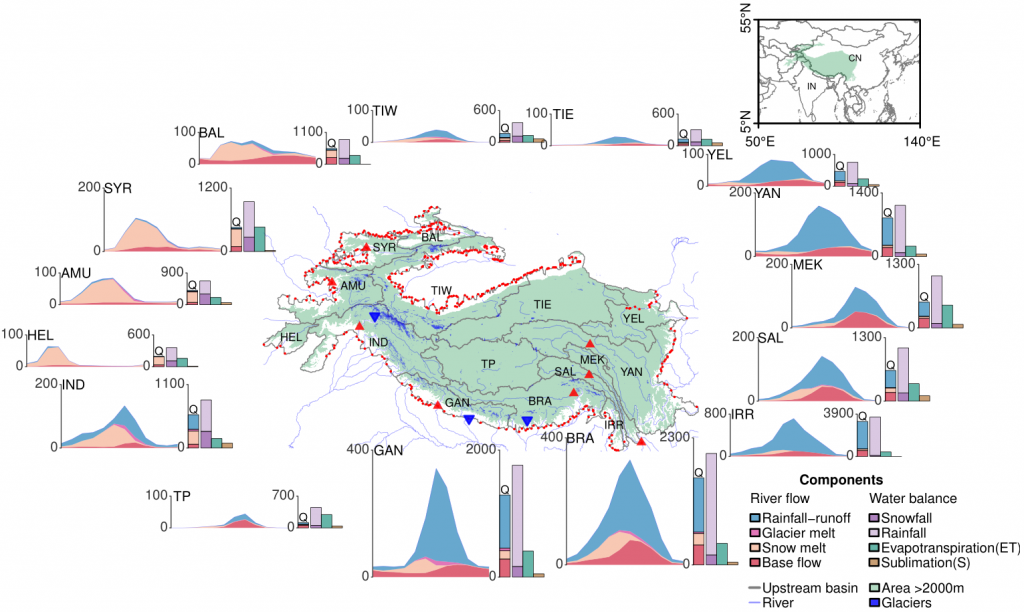High Mountain Asia (HMA) has the world’s largest ice and snow reserves outside the polar regions and is an important source of water for the major river systems in Asia, providing water for a population of more than a billion people. HMA has experienced many climatic changes which led to changes in the cryosphere and hydrological cycle. Past studies have focused on glaciers to derive the impact of either historical or future climate change on meltwater availability in basins in HMA. These basin-scale and regional studies use different data and approaches. Variability in approaches, data, and methods makes it difficult to align and compare the effects of climate change on future melt contribution and water availability across HMA. In this study, we bridge scale, variability in approaches, data, and methodological issues by implementing a consistent data and model. To robustly assess the 21st century climate change impact for hydrology in entire HMA at a wide range of scales, we use a high resolution cryospheric-hydrological model covering fifteen upstream HMA basins to quantify the compound effects of future changes in precipitation and temperature based on the range of climate change projections in the CMIP6 climate model ensemble.
Our analysis shows contrasting climate change responses across High Mountain Asia’s upstream river basins, dictated by the present-day variability in climate and hydrological regimes. At the large, river basin scale, the upstream basins of fifteen rivers in High Mountain Asia can be grouped into four hydrological regimes: glacial-nival, nival-pluvial, nival, and pluvial. Results show that an increased fraction of liquid precipitation due to climatic warming results in higher peak total runoff in all the basins. At the seasonal scale, the earlier onset of melting causes a shift in the magnitude and peak of water availability, to earlier in the year. At the decade to century scale, after an initial increase, the glacier melt declines by the mid or end of the century except for the Tarim river basin, where it continues to increase. Despite a large variability in hydrological regimes across HMA’s rivers, our results indicate relatively consistent climate change responses across HMA in terms of total water availability at decadal time scales.

Authors illustrates that the changes in total water availability are stronger in magnitude for the headwaters than at lower altitudes. It is the change in seasonality and changes in peak melt runoff that will pose the main challenge to be addressed in adapting to future changes in a region where food security, energy security as well as biodiversity, and the livelihoods of many depend on water from the mountains. These findings provide important information to support climate change adaptation policy planning in this climate change hotspot.
The study is gaining serious attention and highlighted by many regional and international organizations such as Mountain Hydrology, International Centre for Integrated Mountain Development (ICIMOD) and Third Pole Environment. This work has been led by our employee Mr. Sonu Khanal under the PanTPE project. FutureWater has been working for the past 15 years in the region to address the issues related with water resources, cryosphere and climate change.


